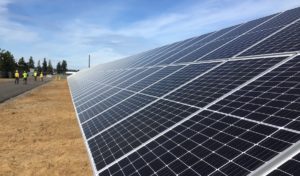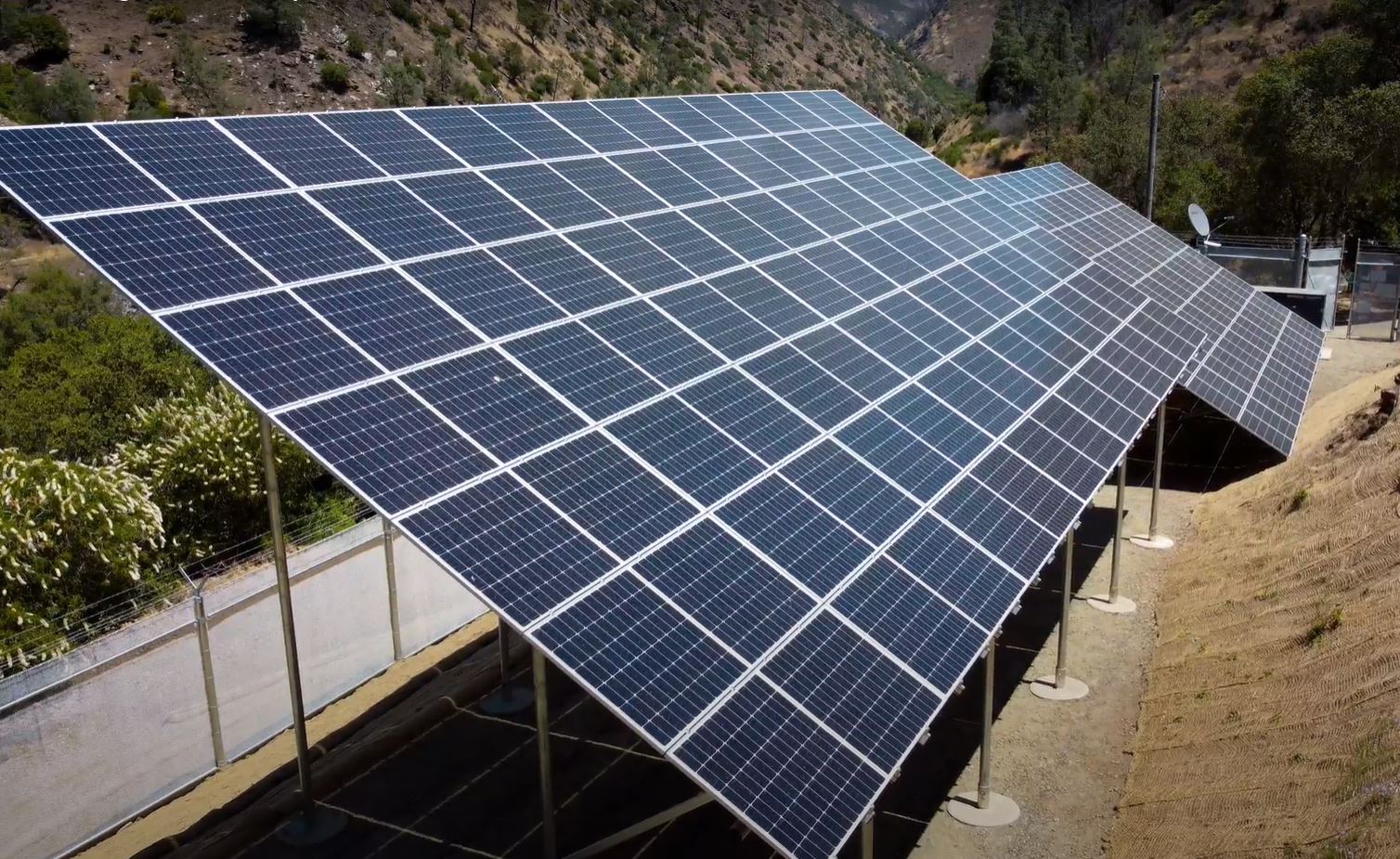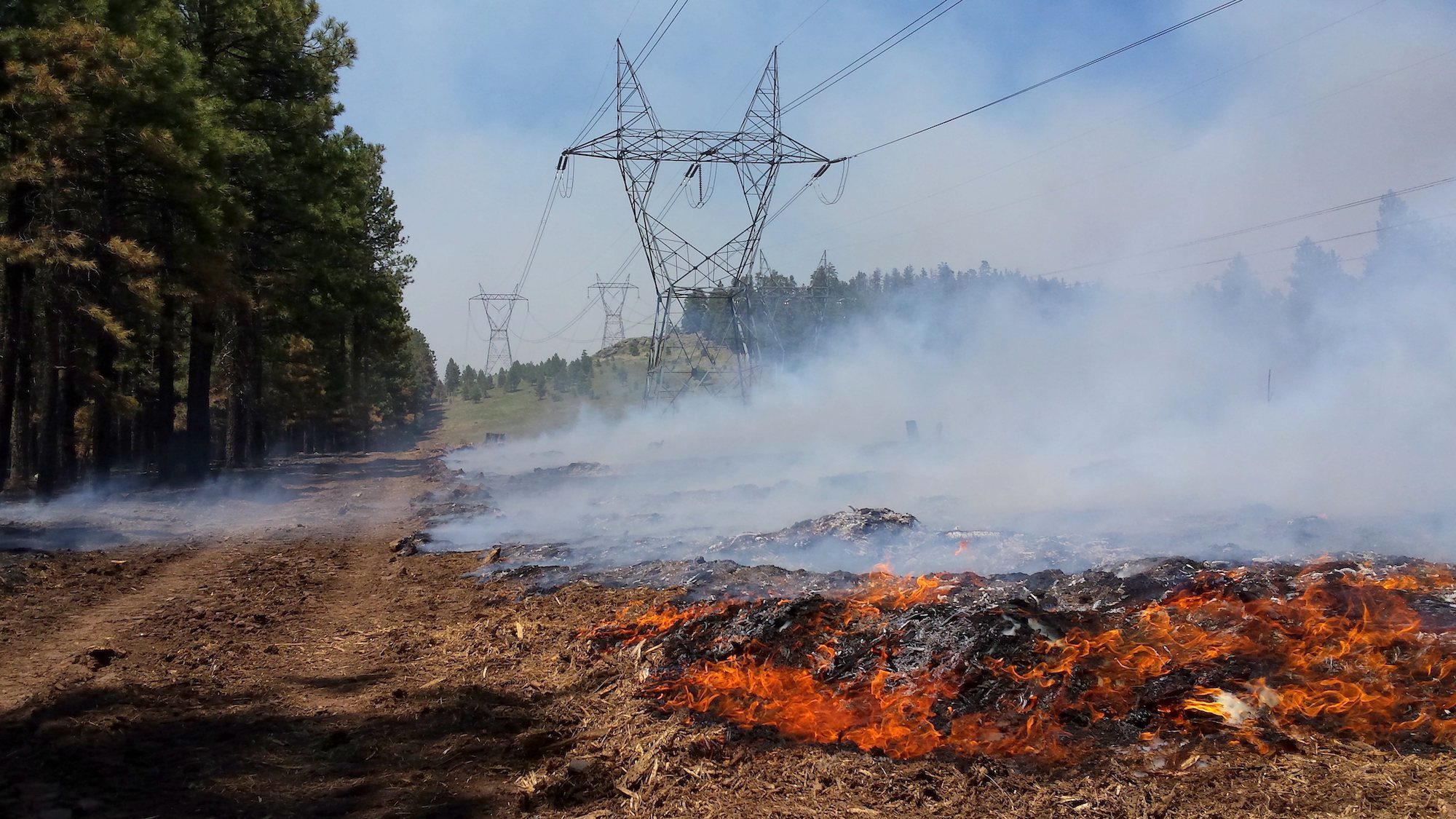By Linda Barney
Approaches to improve resiliency are as varied as the geographies that comprise Alaska, Oregon and Washington. Ongoing regional projects demonstrate how the microgrids can add resiliency in different ways, suited to each community’s resources and needs. In Eugene, the focus is on providing power and water during emergencies. In Snohomish county, local residents can purchase solar energy credits from the same PV array that charges the PUD’s microgrid. And way up in Cordova, Alaska, an energy storage system aims to cut diesel fuel costs as well as help out during natural disasters.
EWEB Builds Community Points of Distribution Microgrid Sites

The Eugene Water & Electric Board (EWEB) located in Eugene, Oregon is in the process of creating and expanding Community Points of Distribution (CPOD) sites in public places such as schools. One unique element of the CPOD sites is the addition of permanent water storage to CPOD sites. Each CPOD site will include a well, water treatment system, water storage, a standby generator, microgrid system to provide reliable standby power and a building to house equipment.
The site emergency electrical / microgrid system will consist of inverter battery combinations each with 280kW/510kWh for a total of 560kW/1020kWh. It will include two Automatic Transfer Switches (ATS) connected to an 80kW system feeding standby and emergency load panels. The system uses a built-in AEROS controller. The EWEB CPOD sites will provide an alternative source of electricity generation and make power and water available to the public during disasters or other emergencies.
Snohomish County PUD Microgrid Moves Forward
The focus of energy resiliency by the Snohomish County Washington Public Utility District (PUD) is to install a solar array as the first part of their microgrid project. They are building a 500-kilowatt solar array at the first microgrid site in Arlington, Washington. The solar array is scheduled to begin generating electricity in May 2019 and customers will likely begin seeing bill credits in the summer. The 500-kW solar array, which will end up being one of the largest in the state, is slated to be finished in 2020.

“The driver for the microgrid was disaster recovery and grid resiliency during a major disaster like an earthquake. The electricity generated by the solar array will usually be fed onto the grid, but in an emergency the array can charge the future 1MW/1MWh battery energy storage system and power the PUD’s future local office that will be built on-site. The microgrid will also include a Vehicle-to-Grid (V2G) system and a Clean Energy Technology Center, which will showcase the technology to the public, businesses, researchers and other local agencies. Snohomish County PUD customers can purchase solar energy units (one-fifth of a solar panel) for $120, up to the maximum of 130 solar energy units. Customers have reserved about 75 percent of the units so far,” states Aaron Swaney, PR & Media Liaison, Snohomish County PUD | District 1.
Cordova Electric Cooperative Installing ESS Battery Storage in Microgrid
The small town of Cordova, Alaska, U.S., 150 miles (241 km) southeast of Anchorage, Alaska, has no connection to an electric grid and faces unique challenges in increasing energy efficiency. The town currently relies on a microgrid managed by the Cordova Electric Cooperative Inc. (CEC) which operates a 6-MW run-of-river hydro generator at its Power Creek facility as well as a 1.25-MW run-of-river hydro facility at Humpback Creek. CEC also uses the output of two 1-MW diesel generators from the Orca diesel generation plant to handle peak loads in the summer, when fish processing plants are running, or when the rivers freeze in the winter.

CEC is pioneering the integration of a Lithium ion (Li-ion) Grid Scale Battery Energy Storage Systems (BESS) into their hydropower microgrid to aid in recovering lost hydro generation that currently must be spilled during transition periods between hydro-only and combined hydro-diesel generation. According to Clay Koplin, CEO Cordova Electric Cooperative Inc., “Grid-scale battery Energy Storage Systems (ESSs) have been described as a ‘swiss army knife’ that can provide many different value streams. The Cordova ESS project will be using several of those knife blades simultaneously but the largest value stream will come from one of the first if not the first grid-forming ESS application in a community-wide industrial economy remote microgrid environment to replace the spinning reserve requirements of CEC’s hydroelectric plants. This will save an estimated 35,000 gallons of diesel fuel annually at the outset, and likely more as the system is optimized.”
The changes will not only save fuel and cost, but will increase the resilience of the local microgrid by supporting the grid through natural disasters and other resilience events with black start, emergency backup power, and grid-balancing services to critical infrastructure loads during these events. The Cordova BESS project is scheduled for placement of equipment on new foundations in mid-May 2019, hot commissioning in early June and an iterative process of integration into grid operations over the ensuing months to migrate from manual operations and automatic algorithm development to fully automated operation, to operational optimization.
###
Linda Barney is the founder and owner of Barney and Associates, a technical/marketing writing, training and web design firm in Beaverton, OR.



